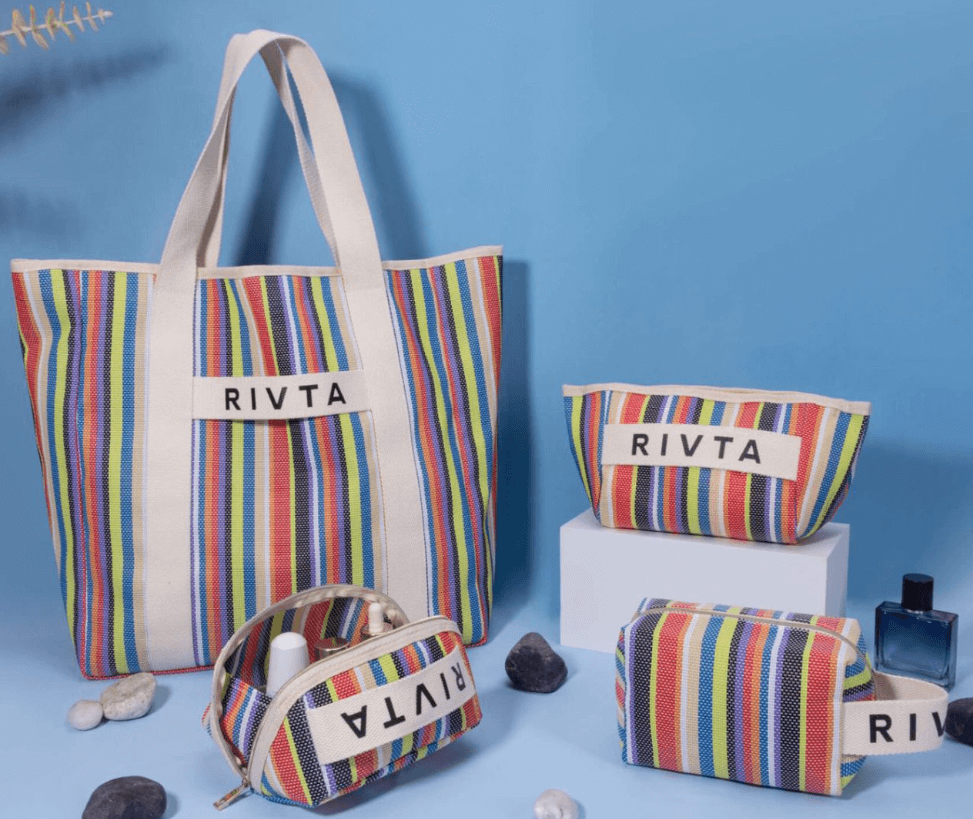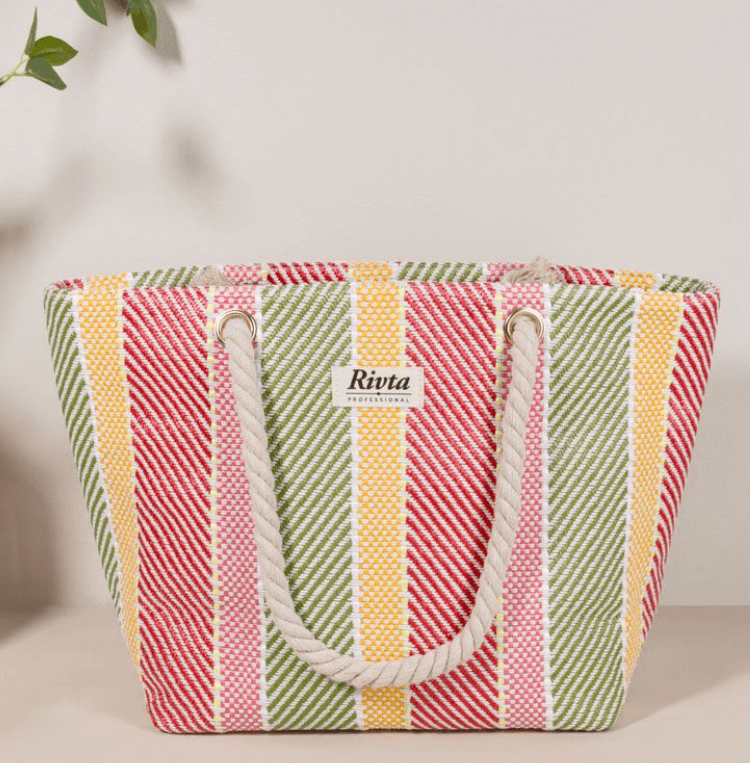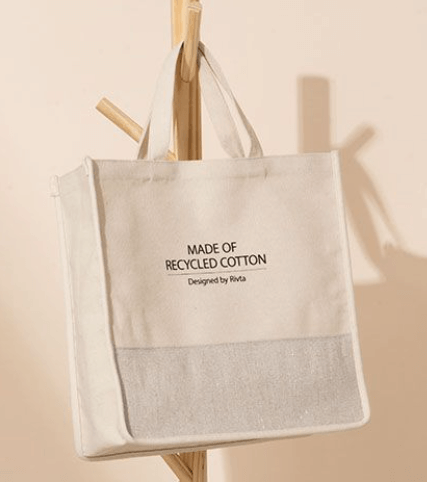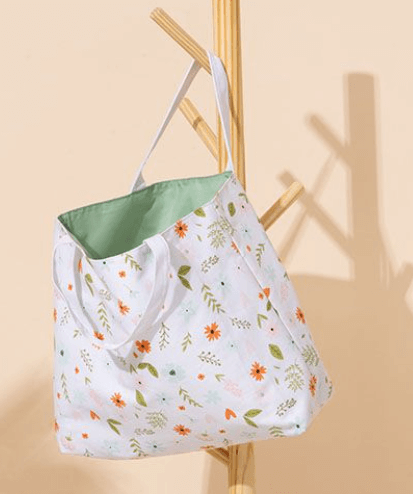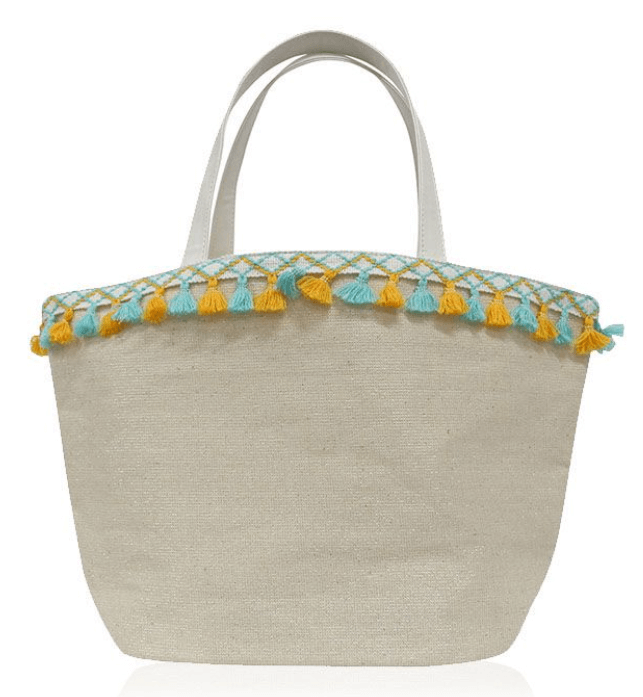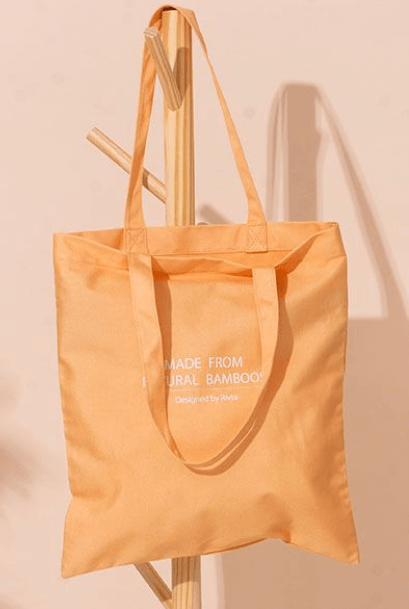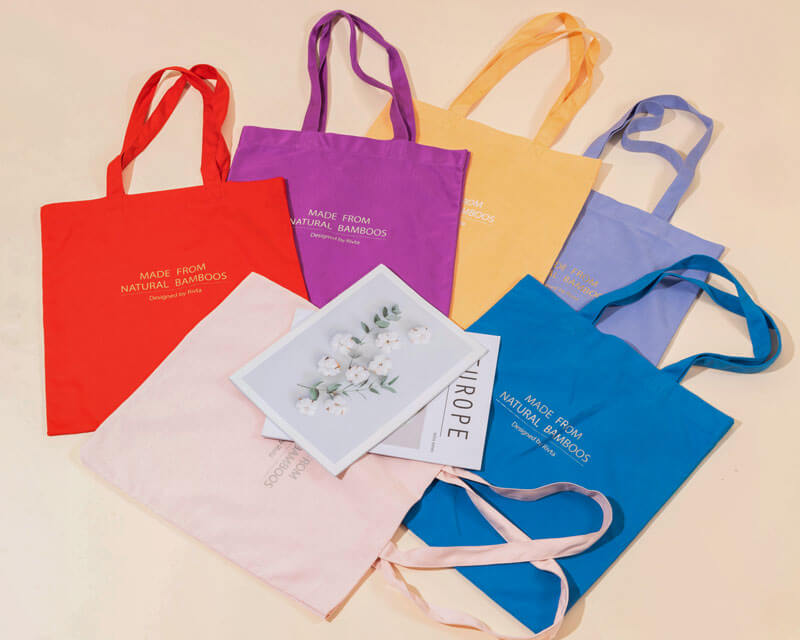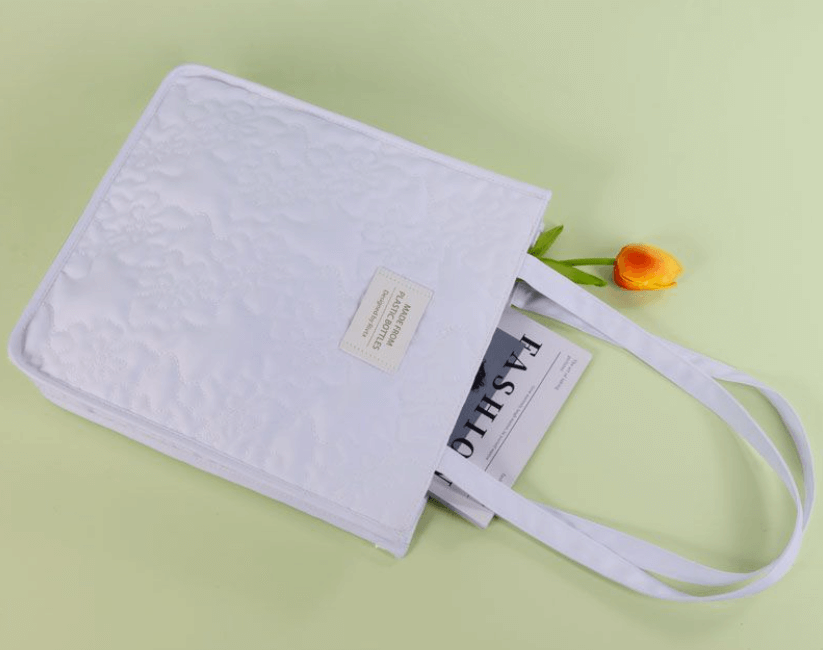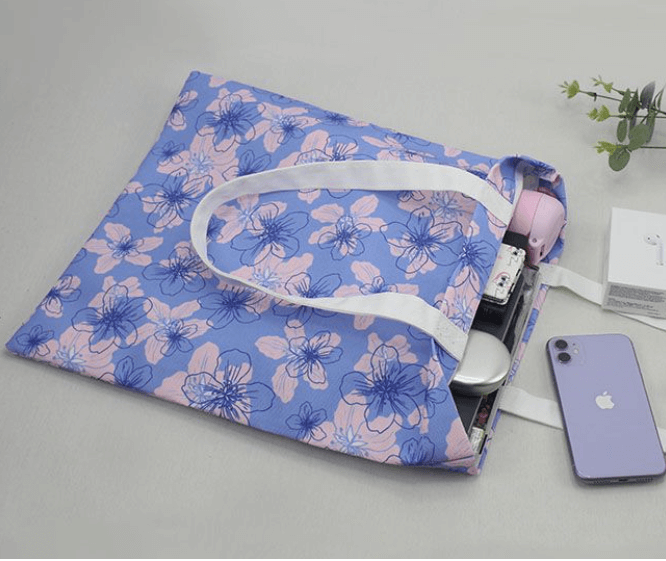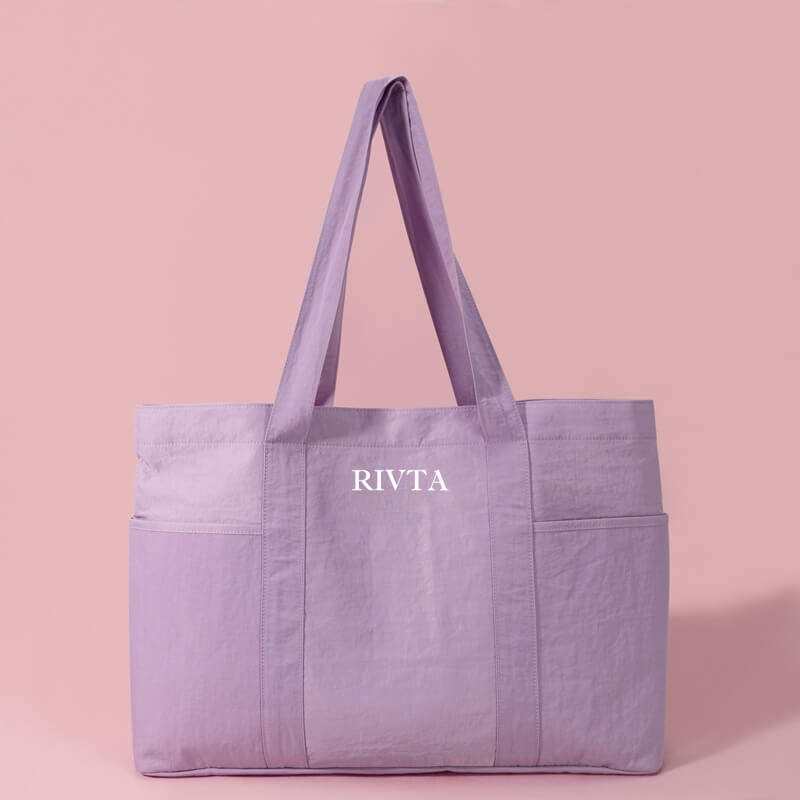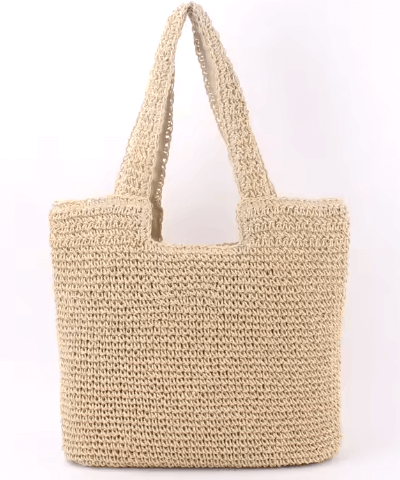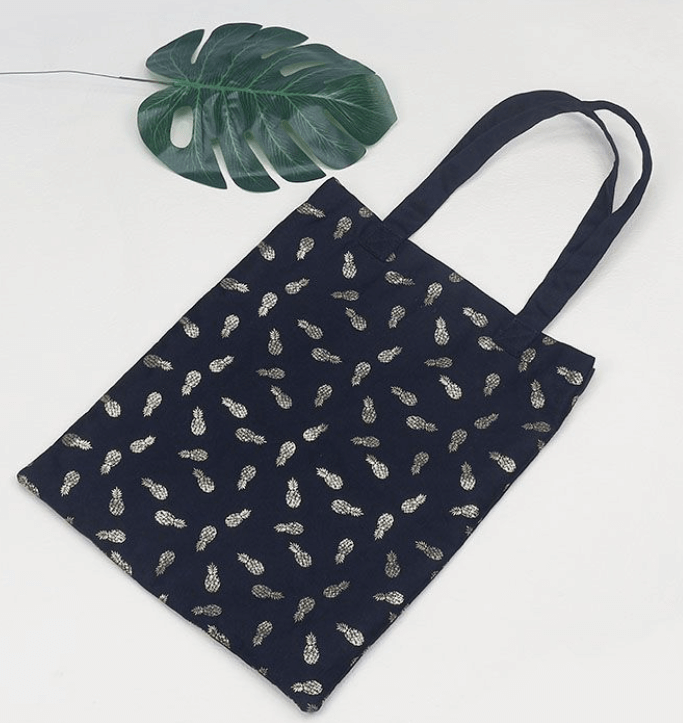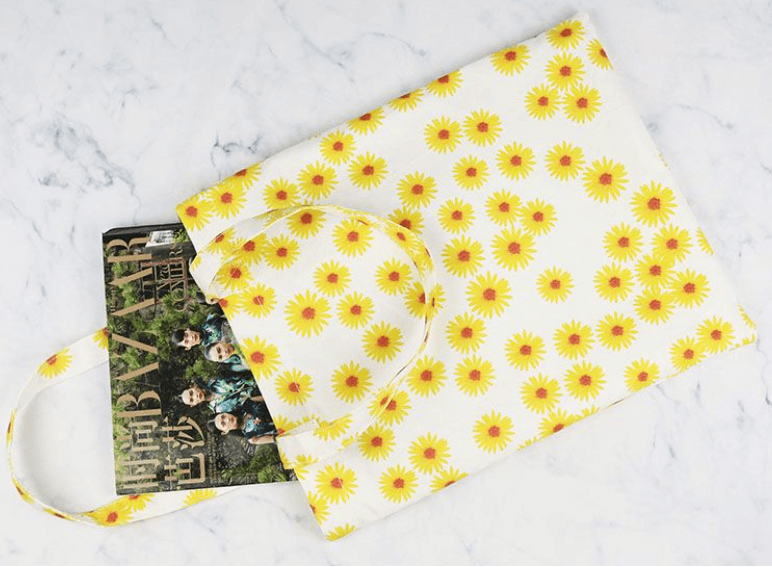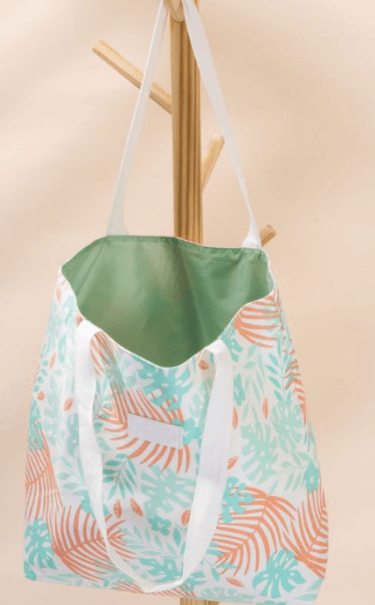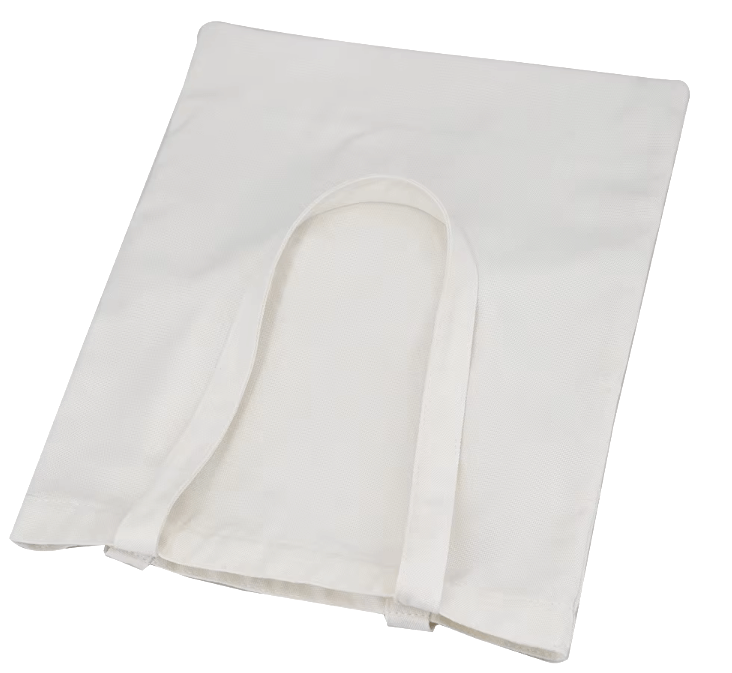Views : 752
Author : Vicky
Update time : 2024-11-12 20:15:31
Top 10 Eco-friendly Tote Bags for Environmentally Conscious Buyers
As the world becomes increasingly aware of the need to preserve the environment, eco-friendly tote bags have emerged as a practical solution to reduce single-use plastic waste. Tote bags have become a staple for shopping, errands, and travel, allowing consumers to make more sustainable choices in their everyday lives. For international buyers, especially those serving eco-conscious customers, finding the right sustainable tote bag is not only a way to meet consumer demand but also an opportunity to support eco-friendly practices and contribute to a healthier planet. This blog will guide you through the best eco-friendly tote bag materials, helping you select options that align with environmental values and appeal to sustainability-focused consumers.
1. The Impact of Eco-friendly Tote Bags
Eco-friendly tote bags have transformed from niche products into mainstream essentials, symbolizing a commitment to reducing plastic waste. Traditional plastic bags, though convenient, contribute to long-lasting pollution, as they take hundreds of years to decompose. Tote bags made from sustainable materials offer a valuable alternative by being reusable, durable, and often biodegradable or recyclable. This not only decreases plastic waste but also minimizes the carbon footprint and environmental harm associated with disposable bags. For eco-conscious buyers, choosing the right materials for tote bags reflects an alignment with values that prioritize environmental protection and resource conservation.
2. Key Factors for Choosing Eco-friendly Tote Bag Materials
Selecting a sustainable tote bag material requires attention to several key factors:
Sustainable Sourcing: For a tote bag to be genuinely eco-friendly, its materials should come from renewable resources that do not deplete or damage ecosystems. Some materials, like organic cotton, bamboo fiber, and jute, are harvested with minimal impact on land and water resources, ensuring a more sustainable production cycle.
Water Conservation: The water footprint of tote bag materials is crucial, as water scarcity is a significant global issue. Materials like organic cotton and linen require significantly less water compared to conventional cotton, while recycled fibers also conserve water by reducing the need for raw material processing.
- Low Carbon Footprint: Carbon emissions from production are a primary concern for sustainable materials. When choosing materials, it's essential to consider those with lower emissions, such as recycled cotton, Tencel, and RPET (recycled polyester), which use fewer resources and have lower greenhouse gas emissions.
- Durability and Recyclability: Eco-friendly tote bags are often more durable than single-use bags, reducing the frequency of replacement. Recyclable materials, such as recycled nylon and RPET, further contribute to the circular economy by minimizing waste and extending the lifecycle of products.
As eco-friendly tote bags grow in popularity, consumers are increasingly mindful of their environmental impact. Beyond just being reusable, these totes can significantly reduce waste and resource consumption when made with sustainable practices in mind. By choosing the right materials, eco-conscious shoppers can find tote bags that align with their values—durable, stylish, and responsibly crafted to protect the planet. With that in mind, let's explore the top ten eco-friendly tote bag options that make sustainability a priority for both brands and consumers.
3. Top 10 Eco-friendly Tote Bag
3.1 Organic Cotton Tote Bags
- Sustainable Sourcing
- Organic cotton is grown without synthetic pesticides, fertilizers, or genetically modified organisms (GMOs), making it a more environmentally responsible choice. By avoiding harsh chemicals, organic cotton farming reduces soil degradation and conserves biodiversity, promoting healthier ecosystems. Additionally, it typically relies on natural processes and crop rotation to maintain soil fertility, ensuring sustainability over time.
- Water Conservation
- Organic cotton significantly reduces water usage compared to conventional cotton. Studies show that organic cotton farming can use up to 91% less water, as it largely depends on rainwater and has better soil water retention. This lower water footprint makes organic cotton ideal in regions facing water scarcity.
- Low Carbon Footprint
- Organic cotton has a smaller carbon footprint than its conventional counterpart, producing around 46% fewer carbon emissions. This reduction results from less energy-intensive farming practices, as organic farms avoid synthetic fertilizers and pesticides, which require significant energy to produce and contribute to greenhouse gas emissions.
- Durability and Recyclability
- Organic cotton is soft yet durable, providing long-lasting usage, which is essential for an eco-friendly tote bag. The material's natural durability reduces the need for frequent replacements, helping consumers reduce waste. Additionally, organic cotton is recyclable and biodegradable, meaning it can be reprocessed or decomposed with minimal environmental impact, aligning well with the goals of a circular economy.
- Advantages: Soft and comfortable, suitable for long-term use as a tote bag.
- Uses: Commonly used for grocery shopping bags and everyday totes, ideal for vegan and environmentally conscious consumers.
3.2 Recycled Cotton Tote Bags
- Sustainable Sourcing
- Recycled cotton is made from pre- or post-consumer waste, such as discarded fabric scraps and old cotton clothing. By repurposing existing cotton fibers, recycled cotton reduces the demand for virgin cotton cultivation, which typically requires substantial land, water, and resources. This closed-loop sourcing minimizes waste and contributes to a more sustainable production cycle.
- Water Conservation
- The production of recycled cotton uses significantly less water than growing new cotton. For example, each kilogram of recycled cotton can save nearly 20,000 liters of water compared to traditional cotton cultivation. This substantial water savings makes recycled cotton an excellent option for eco-friendly tote bags, especially in areas where water scarcity is a concern.
- Low Carbon Footprint
- Since recycled cotton reuses existing fibers, it bypasses many resource-intensive steps required for conventional cotton production, such as growing, harvesting, and processing new cotton plants. As a result, recycled cotton has a considerably lower carbon footprint, emitting fewer greenhouse gases and consuming less energy. This reduction in emissions aligns with sustainable practices by conserving resources and reducing environmental impact.
- Durability and Recyclability
- Recycled cotton is known for its durability, offering comparable strength to virgin cotton. This durability means that recycled cotton tote bags can withstand repeated use, reducing the need for frequent replacements. Additionally, recycled cotton can be further recycled, supporting a circular economy and minimizing textile waste in landfills. This recyclability extends the lifecycle of the material, making it an ideal choice for eco-friendly tote bags.
- Advantages: Soft, durable, and eco-friendly, reducing dependency on water resources and energy in production.
- Uses: Suitable for making high-quality shopping bags and gift bags, a preferred material for many eco-friendly brands.
3.3 Linen Tote Bags
- Sustainable Sourcing
- Linen is derived from the flax plant, which grows quickly and requires minimal inputs, such as water and fertilizers. Unlike many other crops, flax can thrive in poor soil conditions without heavy chemical intervention. The production of linen thus has a low environmental impact, as flax cultivation generally avoids the use of pesticides and herbicides. Additionally, flax plants can be grown in rotation with other crops, which helps maintain soil health and supports biodiversity.
- Water Conservation
- Linen has one of the lowest water footprints among natural fibers. Flax cultivation requires little to no irrigation, relying mainly on rainwater. As a result, linen production uses up to 20 times less water compared to organic cotton, making it an excellent choice for regions facing water scarcity. This significant water efficiency contributes to linen’s reputation as one of the most sustainable fibers for eco-conscious products.
- Low Carbon Footprint
- The production of linen fiber has a relatively low carbon footprint. Flax plants absorb carbon dioxide as they grow, helping offset emissions during processing. Additionally, the minimal use of chemicals and energy in flax cultivation reduces carbon emissions compared to many other natural fibers. This low carbon impact makes linen a highly sustainable choice for tote bags, supporting eco-friendly goals of reducing greenhouse gas emissions.
- Durability and Recyclability
- Linen is naturally durable, with fibers that grow stronger when wet, making it an ideal material for long-lasting tote bags. Its resistance to stretching and degradation ensures that linen tote bags can withstand frequent use, reducing the need for replacements. Linen is also fully recyclable and biodegradable, allowing it to return to the environment without leaving a lasting footprint. This durability and recyclability support a circular economy, aligning well with sustainability values.
- Advantages: Durable, antibacterial, moisture-absorbing, and breathable—suitable for various weather conditions.
- Uses: Linen totes are elegant and ideal for daily use and beach bags.
3.4 Jute Tote Bags
- Sustainable Sourcing
- Jute is a fast-growing plant that matures in about 120 days, making it one of the most renewable fibers available. Grown primarily in tropical regions, jute thrives in rain-fed areas and does not require irrigation, pesticides, or chemical fertilizers, keeping its environmental impact low. Furthermore, jute crops naturally enhance soil fertility by trapping moisture and adding organic matter, making jute cultivation highly sustainable and beneficial for local ecosystems.
- Water Conservation
- Jute is one of the most water-efficient fibers due to its reliance on natural rainfall instead of irrigation. This low water requirement makes it a sustainable alternative to water-intensive fibers like cotton. Since jute production consumes minimal freshwater resources, it is especially suitable for areas where water conservation is critical. This water efficiency highlights jute’s suitability as a sustainable option for eco-conscious products.
- Low Carbon Footprint
- Jute plants absorb large amounts of carbon dioxide, contributing to a cleaner environment. Additionally, because jute requires minimal agricultural inputs and energy during processing, it has a relatively low carbon footprint. The fast growth of jute also means that it can quickly offset its production emissions, making it a favorable choice for reducing overall carbon impact.
- Durability and Recyclability
- While jute is not as durable as some other natural fibers like cotton or linen, it is sturdy enough for lightweight, everyday use. This material is fully biodegradable and recyclable, meaning that once disposed of, it will decompose naturally without leaving a lasting impact on the environment. Though jute tote bags are generally suited for short-term or single-use applications, their recyclability and biodegradability make them an eco-friendly option for shoppers who value sustainability.
- Advantages: Sturdy texture, ideal for a rugged, natural aesthetic.
- Uses: Commonly used for market and grocery bags, or as rustic-style eco-friendly bags.
3.5 Bamboo Fiber Tote Bags
- Sustainable Sourcing
- Bamboo is a rapidly renewable resource that can grow up to 3 feet in just 24 hours and reaches full maturity within 3-5 years, making it highly sustainable. Bamboo cultivation requires no pesticides, herbicides, or fertilizers due to its natural resistance to pests, which minimizes its environmental impact. Additionally, bamboo plants help prevent soil erosion and support soil health by creating a dense root system, making bamboo an excellent source for eco-friendly materials.
- Water Conservation
- Bamboo is highly water-efficient, needing minimal irrigation beyond natural rainfall. Its water footprint is significantly lower than that of water-intensive crops like conventional cotton, making it an ideal choice for regions with water scarcity. The low water requirement of bamboo fiber production supports eco-conscious goals by conserving water and reducing the strain on freshwater resources.
- Low Carbon Footprint
- Bamboo absorbs more carbon dioxide and produces more oxygen than many other plants, contributing positively to air quality and reducing greenhouse gases. As it grows quickly and requires minimal energy inputs during cultivation, bamboo has a low carbon footprint compared to fibers like cotton. This rapid growth and low-impact production make bamboo a favorable choice for reducing overall carbon emissions in the manufacturing process.
- Durability and Recyclability
- Bamboo fiber is strong, soft, and antibacterial, making it durable for everyday tote bags. Its longevity reduces the need for replacements. Bamboo is biodegradable and decomposes within months to a year, minimizing long-term waste. Responsibly produced bamboo fiber supports a circular economy and sustainable practices.
- Advantages: Offer a lightweight, soft, and eco-friendly alternative to plastic bags, making them suitable for a range of uses.
- Uses: Bamboo fiber tote bags are perfect for everyday activities such as shopping, carrying groceries, or as casual carry-all bags.
3.6 RPET Tote Bags
- Sustainable Sourcing
- RPET (Recycled Polyethylene Terephthalate) is made from post-consumer plastic bottles, which are repurposed into new materials instead of being sent to landfills. This helps reduce the demand for virgin plastic and cuts down on waste. By recycling plastic bottles, RPET helps reduce the plastic footprint and conserve natural resources. Approximately 1 kilogram of RPET saves around 5 plastic bottles from landfills.
- Water Conservation
- RPET production uses significantly less water compared to virgin polyester. While traditional polyester requires over 10,000 liters of water per kilogram of fiber, RPET’s production reduces this by 50%, making it a water-efficient choice, especially in regions facing water scarcity.
- Low Carbon Footprint
- RPET has a much lower carbon footprint than virgin polyester. The recycling process uses 30-50% less energy, cutting greenhouse gas emissions and requiring fewer chemicals and water. Using RPET in tote bags helps reduce carbon emissions and supports companies’ sustainability goals.
- Durability and Recyclability
- RPET is highly durable, resistant to wear, and lightweight, making it perfect for everyday use in tote bags. These bags are easy to care for and long-lasting, reducing the need for frequent replacements. At the end of their life, RPET bags are fully recyclable, supporting a circular economy. With recycling rates increasing, RPET bags help reduce plastic waste, with over 2.7 million tons of plastic bottles being recycled into new products annually. By using RPET, consumers contribute to reducing plastic pollution and promoting sustainability.
- Advantages: offer a practical, durable, and eco-friendly alternative to single-use plastic bags.
- Uses: RPET tote bags are versatile and can be used for a variety of purposes, such as shopping, groceries, gym bags, or casual everyday carry.
3.7 Recycled Nylon Tote Bags
- Sustainable Sourcing
- Recycled nylon is made from post-consumer waste materials such as discarded fishing nets, fabric scraps, and industrial plastic waste. This process helps divert nylon waste from landfills and oceans, where it would otherwise contribute to pollution. By recycling nylon, we can reduce the demand for virgin nylon, which is derived from petroleum, and decrease the environmental impact associated with nylon production.
- Water Conservation
- The production of recycled nylon requires significantly less water compared to the production of virgin nylon. Nylon manufacturing typically uses a substantial amount of water for dyeing and processing, whereas recycled nylon production uses fewer chemicals and less water. By choosing recycled nylon, consumers can help conserve valuable water resources, making it a sustainable choice for those seeking to reduce their environmental footprint, particularly in water-scarce regions.
- Low Carbon Footprint
- Recycled nylon has a much lower carbon footprint than virgin nylon. The energy-intensive process of creating new nylon from petrochemicals is replaced by recycling existing nylon waste, which uses considerably less energy and emits fewer greenhouse gases. This reduction in energy usage and carbon emissions makes recycled nylon a much more eco-friendly alternative, contributing to global efforts to combat climate change. By supporting the use of recycled nylon, businesses and consumers alike can play a part in reducing the environmental impact of textile production.
- Durability and Recyclability
- Recycled nylon is durable, strong, and resistant to wear, making it ideal for long-lasting tote bags. These bags are perfect for groceries, personal items, and daily use.
- Advantages: Strong, lightweight, and resistant to damage, offering a stylish, eco-friendly alternative to disposable plastics.
- Uses: Great for grocery shopping, carrying essentials, or as an everyday accessory, providing a durable, water-resistant option to plastic and synthetic bags.
3.8 Straw Tote Bags
- Sustainable Sourcing
- Straw tote bags are crafted from natural plant fibers such as seagrass, wheat straw, or raffia, which are renewable and often come from agricultural by-products. By using these fibers, straw totes prevent approximately 1–2 pounds of crop waste per bag from becoming landfill material. Since straw plants like wheat and seagrass grow quickly, they can be harvested up to three times per season, ensuring a low environmental impact and minimal need for replanting. The use of straw in tote bags helps support resource conservation and reduces reliance on synthetic materials.
- Water Conservation
- Growing straw requires minimal water, making it an efficient and water-saving material choice. While crops like cotton can use over 10,000 liters of water per kilogram, straw plants typically grow with natural rainfall and require around 70% less water during cultivation. By choosing straw tote bags, consumers support water conservation efforts, which are especially critical in regions facing water scarcity.
- Low Carbon Footprint
- Straw totes have a significantly lower carbon footprint than conventional tote materials. The production process involves minimal processing—cutting, drying, and weaving—which keeps energy consumption low. This results in approximately 30–40% fewer greenhouse gas emissions compared to materials like polyester or leather. Additionally, as plants, straw sources like wheat and seagrass naturally absorb CO₂, contributing to carbon sequestration that can offset emissions, making them an environmentally friendly option.
- Durability and Recyclability
- Straw’s natural durability and flexibility make these tote bags lightweight yet sturdy for multiple seasons. Biodegradable within 6–12 months, straw totes leave minimal environmental impact, decomposing fully and supporting a circular economy.
- Advantages: Stylish, lightweight, and fully biodegradable, straw totes offer a sustainable, nature-inspired look. With up to 20% lower environmental impact than synthetic bags, they provide a durable, eco-friendly choice for sustainability-minded consumers.
- Uses: Perfect for shopping, beach trips, and casual outings, straw tote bags combine unique texture and style with low environmental impact, making them ideal for eco-conscious consumers seeking versatile, functional accessories.
3.9 Pineapple fiber Tote Bags
- Sustainable Sourcing
- Pineapple fiber, is made from the leaves of the pineapple plant, which are typically discarded after fruit harvest. Each pineapple plant can yield up to 1,000 fibers, with up to 10 tons of leaves produced per hectare annually, reducing agricultural waste. This process minimizes the need for virgin materials and supports sustainable farming practices.
- Water Conservation
- Pineapple plants require very little water, relying mostly on natural rainfall. Compared to cotton, which requires approximately 10,000 liters of water to produce 1 kilogram of fiber, pineapple fiber requires significantly less water, making it an ideal choice for water-scarce regions.
- Low Carbon Footprint
- The production of pineapple fiber has a much lower carbon footprint than synthetic fibers. Pineapple plants grow quickly, reaching full maturity in 18-24 months, and require minimal use of fertilizers or pesticides. The carbon footprint of Piñatex production is estimated to be 30% lower than that of conventional leather or synthetic materials, making it a highly sustainable alternative.
- Advantages:
- Pineapple fiber tote bags are lightweight, durable, biodegradable, and offer a unique texture. They provide a sustainable alternative to synthetic bags, with up to 20% less environmental impact than leather or petroleum-based materials.
- Uses:
- Ideal for shopping, carrying personal items, or as fashion accessories, these durable, eco-friendly bags decompose naturally, making them a great choice for eco-conscious consumers.
3.10 Tencel Tote Bags
- Sustainable Sourcing
- Tencel, also known as lyocell, is made from sustainably sourced wood pulp, primarily from eucalyptus, beech, and spruce trees. These trees are grown in certified forests, ensuring responsible forestry practices. Tencel production uses a closed-loop process where 99% of solvents and water are recycled, minimizing waste and environmental impact. This sustainable sourcing helps preserve natural resources and reduces deforestation.
- Water Conservation
- The production of Tencel uses significantly less water compared to traditional cotton. The closed-loop process ensures efficient water use, reducing the strain on freshwater resources. Tencel production typically uses up to 10 times less water than conventional cotton farming, making it an ideal choice for eco-conscious consumers in water-scarce regions.
- Low Carbon Footprint
- Tencel has a lower carbon footprint than many conventional fibers. The production process consumes less energy and fewer chemicals than traditional fabrics like cotton or polyester. Because the fibers are made from fast-growing trees that absorb carbon dioxide, Tencel also contributes to carbon sequestration. This helps reduce overall greenhouse gas emissions, aligning with sustainable practices.
- Durability and Recyclability
- Tencel is known for its durability, smooth texture, and resistance to wrinkles. Tencel tote bags are long-lasting and versatile, ideal for everyday use. Additionally, Tencel is biodegradable and can decompose naturally in soil, reducing long-term waste and supporting a circular economy.
- Advantages: soft, strong, and biodegradable, offering a sustainable alternative to synthetic bags with a luxurious feel. They are eco-friendly, durable, and provide a stylish choice for consumers committed to sustainability.
- Uses: Perfect for shopping, carrying personal items, or as an everyday accessory, Tencel tote bags offer a versatile, eco-conscious solution for those looking to reduce their environmental footprint.
As businesses and consumers become more conscious of their environmental impact, the future of eco-friendly tote bags will focus on innovation, versatility, and accessibility. By choosing materials that contribute to sustainability goals, we can collectively work toward a greener, waste-free future. The selection of eco-friendly tote bags will only become richer and more varied, offering consumers the opportunity to make responsible choices without compromising on style or practicality. The trend toward sustainable products is not just a passing moment—it’s the future of fashion, and it’s here to stay.
< style type = "text/css" > .my-list li { line - height: 4; }
Related News
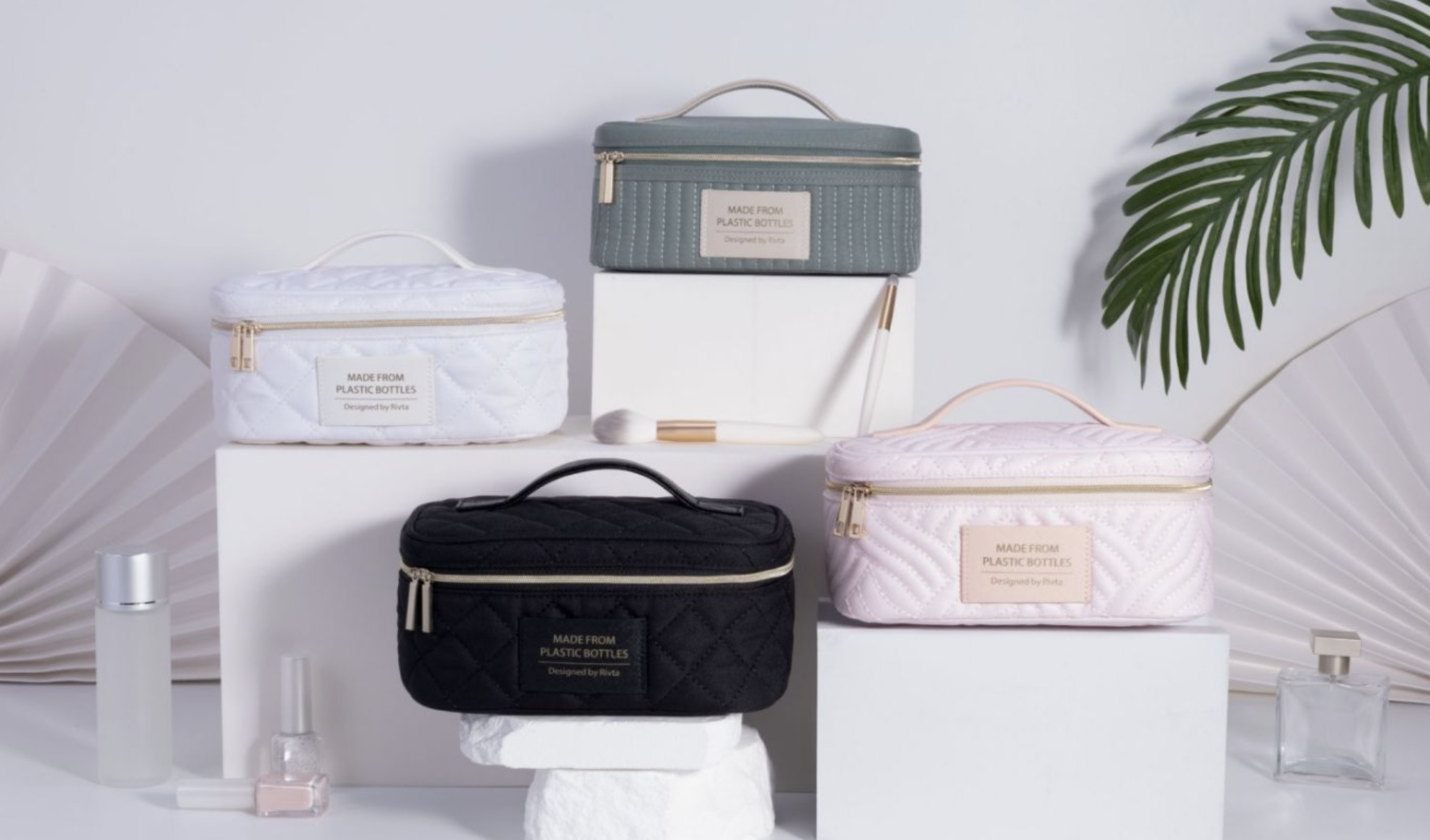
When "High-End" Meets "Customization": How We Crafted Beyond-Expectations Luxury Cosmetic Bags for Our Dutch Clients
Aug .07.2025
In an increasingly competitive market, how can a brand stand out and consistently capture consumer attention? Many businesses often face bottlenecks when seeking innovation and breakthroughs.
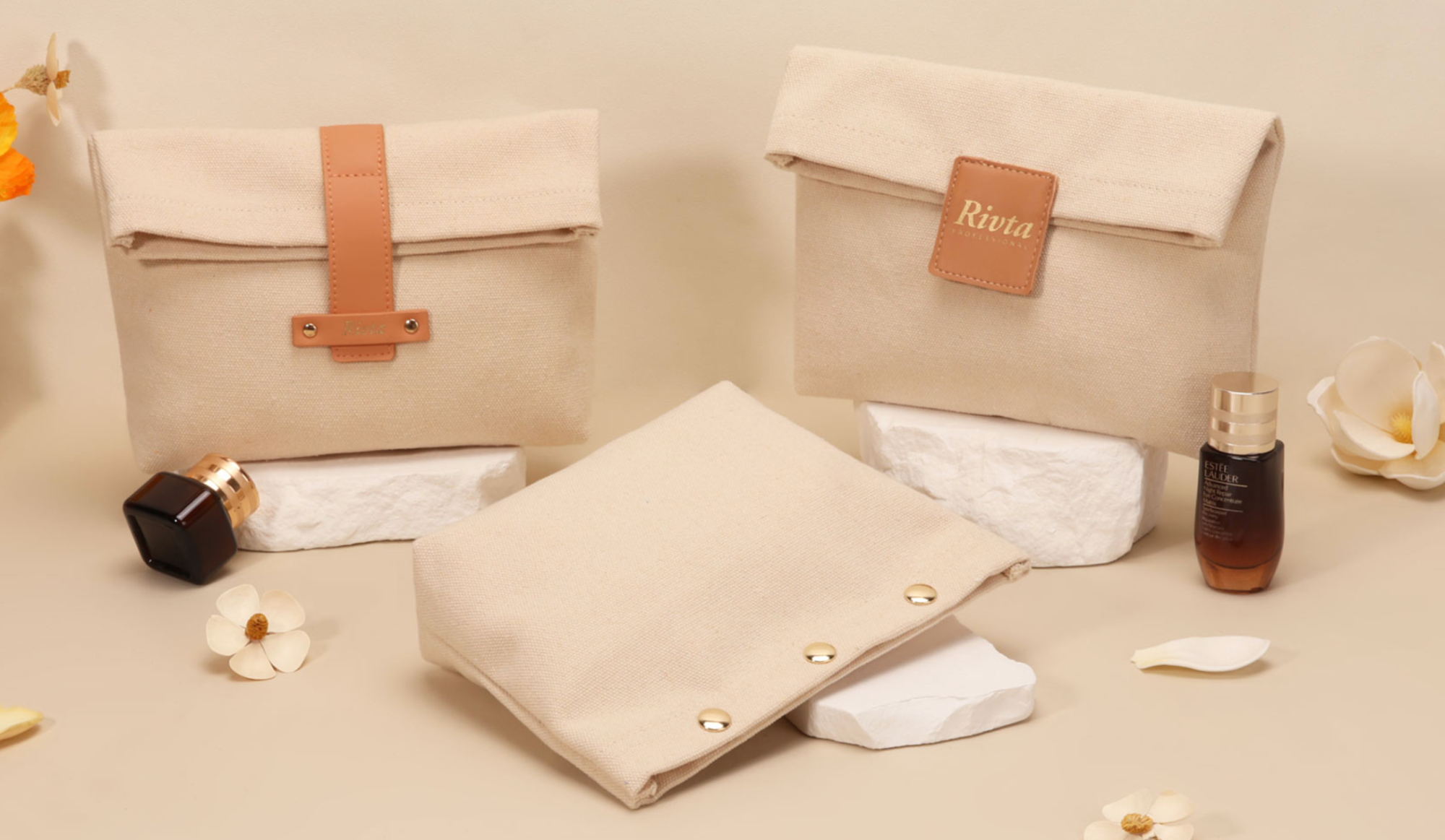
How Custom Canvas Bags Help Skincare Brands Stand Out in Retail Promotions and Sampling
Aug .05.2025
In today's competitive skincare market, brands constantly seek innovative ways to create memorable experiences. While product efficacy is paramount, packaging and promotional materials have become powerful tools for differentiation and consumer engagement
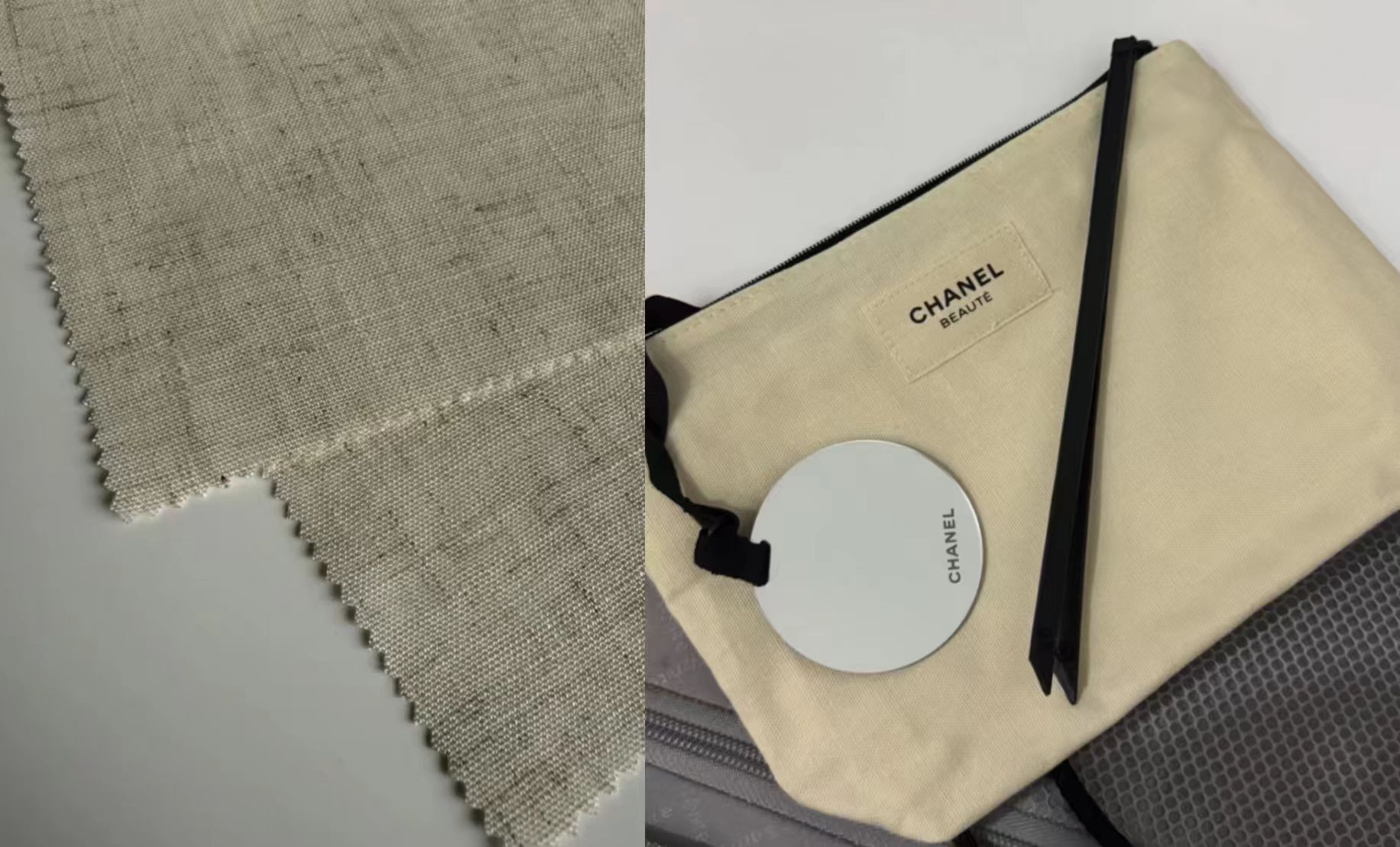
The Natural Choice That Sells Itself: How Linen Cotton Bags Transform Your Brand Into a Lifestyle Statement
Aug .04.2025
Consumers today expect brands to reflect their values, and few choices speak sustainability louder than natural fabrics. Linen–cotton bags blend the charm of linen with the softness of cotton, creating a reusable accessory that reinforces a brand's eco-fr
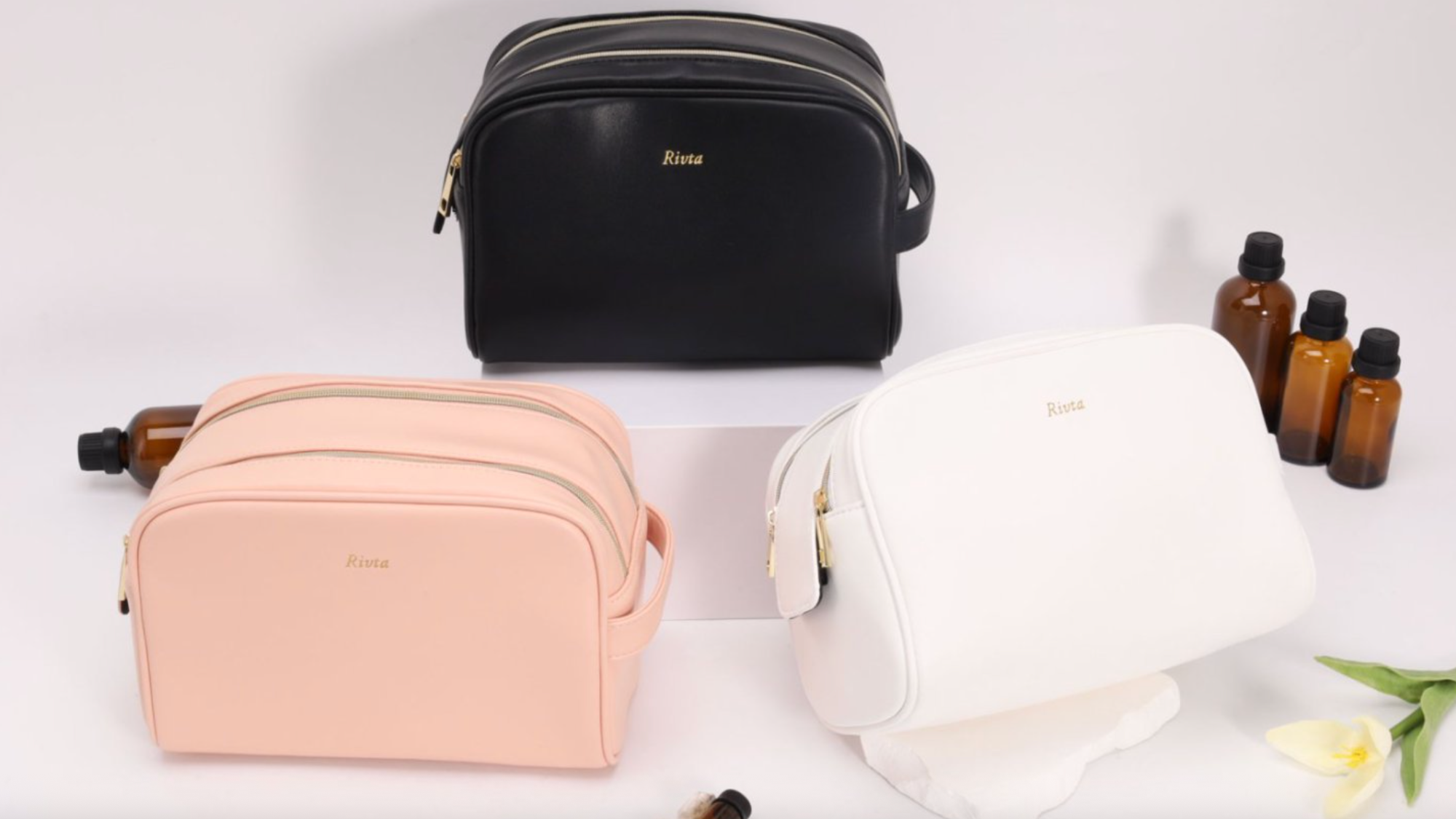
How Premium Cosmetic Bags Boost Engagement at Skincare Events
Aug .01.2025
In the dynamic world of beauty, particularly within the skincare sector, the landscape of consumer interaction is rapidly evolving. Gone are the days when a simple product display sufficed. Today, brands are challenged to create immersive, memorable exper


















